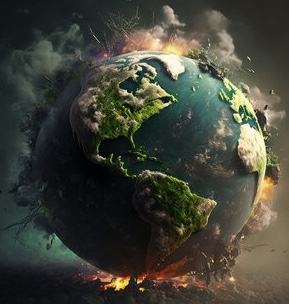
Tipping Point

Tipping Point


This is how ‘tipping points’ work. This earth shows nine tipping points we are approaching, including in the Amazon rainforest, which is home to a mind-boggling number of different kinds of plants, animals, fungi, and humans. Already, farmers are burning and cutting down large parts of the rainforest to make space for cows and crops. Today, about 18% of the forest has been destroyed. If we reach 20% or 25%, the whole rainforest will stop working - it will dry out and huge areas will burn, releasing a terrifying amount of carbon dioxide, making climate change much worse. This will dry out the forest even more. In other words, the boulder will roll down the other side of the hill.
It’s not just the Amazon (1). Ice sheets in Greenland (6), the Arctic (2) the East and West Antarctic (8, 9) could melt due to rising temperatures. These events would cause sea level rise between 3-10 metres, reshaping the world’s coastlines. Frozen soils, known as permafrost (7), in the arctic regions of Russia, Canada and Alaska could melt, releasing huge amounts of carbon and methane (both greenhouse gases) trapped underground. This would lead to even more warming. Then there’s the northern hemisphere’s vast Boreal forest (4), where a single extreme drought event could cause huge areas of forest to die back. What’s left would be much more vulnerable to wildfires. Tropical coral reefs (5) are now very likely to die off due to rising ocean temperatures, with knock-on effects for the entire ocean food web, as well as fishers. Finally, the Atlantic circulation (3) weather system could suddenly shut down. This resulting extreme rainfall and droughts would devastate agriculture around the world, including the UK.